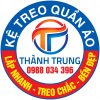In the rapidly evolving digital landscape, website owners and marketers are continually seeking ways to improve user engagement and satisfaction. Central to these efforts is on-page optimization, a collection of strategies designed to make websites more accessible, relevant, and engaging for users and search engines alike. This article explores how on-page factors directly influence digital experiences, supported by industry examples and practical insights.
Table of Contents
- Introduction to On-Page Optimization and Its Role in Digital Experience Enhancement
- Key Components of On-Page Optimization
- The Impact of On-Page Optimization on User Engagement and Conversion
- Challenges in Optimizing Sensitive Industries: The Case of Casino and Gaming Websites
- Educational and Professional Foundations Supporting On-Page Optimization
- Modern Examples of On-Page Optimization: Spotlight on Mobile Slot Testing LTD
- Non-Obvious Factors Enhancing On-Page Optimization and User Experience
- Future Trends in On-Page Optimization for Enhanced Digital Experiences
- Conclusion: Summarizing the Synergy Between On-Page Optimization and Superior Digital Experiences
1. Introduction to On-Page Optimization and Its Role in Digital Experience Enhancement
On-page optimization refers to the practice of refining individual web pages to improve their ranking in search engine results and enhance the overall user experience. In digital marketing, it encompasses a broad range of strategies—from content quality to technical structure—that collectively make a website more accessible and engaging. This process directly influences how users perceive and interact with a website, impacting metrics such as bounce rate, session duration, and conversion rates.
Today’s digital landscape demands user-centric design—where content is relevant, easy to find, and visually appealing. Search engines prioritize websites that meet these standards, recognizing that a well-optimized page not only attracts visitors but also retains them. Consequently, on-page factors serve as a foundation for building compelling digital experiences that resonate with users’ needs and expectations.
Ultimately, on-page optimization influences overall website performance by improving accessibility, load times, and content relevance. These elements work together to create a seamless and satisfying experience that encourages users to stay longer, engage more deeply, and convert into customers or loyal followers.
2. Key Components of On-Page Optimization
a. Content Quality and Relevance
High-quality content tailored to user intent is at the heart of effective on-page optimization. This involves crafting engaging, informative, and keyword-optimized text that directly addresses what users are searching for. For example, a travel website aiming to attract adventure tourists should produce detailed guides on hiking destinations, incorporating relevant keywords naturally to boost visibility. Such content not only improves search rankings but also builds trust and authority.
b. HTML Structure and Metadata
Proper use of HTML tags, meta descriptions, and schema markup enhances both accessibility and search engine comprehension. Well-structured headings (h1, h2, etc.) guide users and crawlers through the content logically. Meta descriptions serve as concise summaries that increase click-through rates, while schema markup provides context, enabling rich snippets. For instance, a recipe website using schema can display cooking times and ratings directly in search results, attracting more clicks.
c. Website Architecture and Navigation
An intuitive architecture ensures users can find information effortlessly. Clear menus, breadcrumb trails, and logical page hierarchies facilitate seamless navigation. For example, e-commerce sites implementing category filters and internal linking enable visitors to discover products quickly, reducing frustration and increasing the likelihood of purchase.
d. Mobile Responsiveness
With over 60% of global web traffic originating from mobile devices, responsive design is no longer optional. Adapting layouts for various screen sizes enhances usability and reduces bounce rates. Studies show that mobile-optimized sites significantly outperform their non-responsive counterparts in user engagement metrics.
3. The Impact of On-Page Optimization on User Engagement and Conversion
Effective on-page strategies lead to tangible improvements in user engagement. Optimized pages tend to have lower bounce rates and longer session durations because visitors find what they need quickly and enjoy a smooth browsing experience. For example, fast-loading pages—achieved through optimized images and minimal code—reduce user frustration and encourage deeper exploration.
Technical fixes such as fixing broken links, improving load times, and ensuring accessibility can drastically enhance user retention. A website that loads in under three seconds, for instance, not only ranks higher in search results but also retains visitors who are less likely to abandon the site due to slow performance.
| On-Page Factor | Impact on User Experience |
|---|---|
| Content Quality | Enhances trust and encourages sharing |
| Meta Data | Improves search visibility and click-through rates |
| Navigation | Reduces frustration and increases time on site |
| Mobile Responsiveness | Ensures accessibility across devices |
4. Challenges in Optimizing Sensitive Industries: The Case of Casino and Gaming Websites
Industries such as online casinos and gaming platforms face unique hurdles in on-page optimization due to strict regulations. Content restrictions aimed at responsible gambling, advertising bans, and regional compliance make it challenging to implement traditional SEO tactics. For example, certain jurisdictions prohibit advertising or promotional content, necessitating creative on-page solutions that emphasize user engagement within legal boundaries.
Balancing regulatory compliance with effective SEO requires innovative approaches. This includes utilizing schema markup to improve visibility without promotional language or designing user-friendly interfaces that foster trust and engagement without violating restrictions. Targeted on-page strategies, such as local SEO optimization and user reviews, can help platforms like 888holdings maintain visibility despite restrictions.
A notable illustration of adapting to these constraints is the deployment of tailored content and technical SEO that emphasizes responsible gaming messages and regulatory compliance, all while striving to deliver a compelling user experience.
5. Educational and Professional Foundations Supporting On-Page Optimization
The development of effective on-page strategies relies heavily on education and ongoing professional development. Institutions like read more about Velerijs exemplify how targeted training in communication, digital marketing, and SEO fosters expertise. Academic programs at universities such as Latvijas Universitāte play a vital role in preparing specialists capable of integrating technical knowledge with practical skills.
Moreover, continuous learning—via certifications, workshops, and industry conferences—ensures SEO professionals stay current with rapidly evolving best practices and algorithm changes. This ongoing education is critical for adapting on-page strategies to emerging technologies, such as AI-driven personalization and voice search.
6. Modern Examples of On-Page Optimization: Spotlight on Mobile Slot Testing LTD
While the principles of on-page optimization are timeless, modern companies demonstrate their importance through innovative implementation. Mobile Slot Testing LTD serves as a contemporary example of how on-page practices are tailored for the gaming industry. Their approach emphasizes mobile-first design, rapid testing, and continuous optimization—key factors in maintaining competitive digital experiences.
The company employs techniques such as A/B testing for interface elements, performance analytics, and user behavior tracking to refine their on-page strategies. These efforts lead to faster load times, intuitive navigation, and content that resonates with mobile gamers. Such examples highlight the importance of continuous testing and adaptation, principles that are applicable across industries seeking to enhance user engagement.
For more insights into their innovative approach, you can read more about Velerijs.
7. Non-Obvious Factors Enhancing On-Page Optimization and User Experience
Beyond technical elements, several subtle factors significantly influence perceived website quality. Psychological design elements, such as color psychology, micro-interactions, and visual cues, can subconsciously guide user behavior. For example, the strategic use of green in call-to-action buttons can increase conversions by conveying trust and safety.
Additionally, incorporating multilingual and localized content broadens global reach and improves engagement with diverse audiences. A gaming platform targeting multiple regions, for instance, must adapt content to cultural preferences and languages, enhancing relevance and user comfort.
Leveraging data analytics and A/B testing allows dynamic refinement of on-page strategies. Continuous monitoring enables websites to adapt to changing user preferences and technological advancements, ensuring sustained relevance and effectiveness.
8. Future Trends in On-Page Optimization for Enhanced Digital Experiences
The landscape of on-page optimization is constantly evolving. Voice search, driven by virtual assistants and smart devices, is becoming increasingly prevalent. Optimizing content for natural language queries and conversational keywords will be essential.
AI-driven personalization offers tailored user experiences based on behavior, preferences, and contextual data. Integrating user-generated content and social proof—such as reviews and testimonials—further enhances credibility and engagement.
Adapting to regulatory changes and technological innovations will remain critical. For example, privacy regulations like GDPR influence data collection and user tracking, requiring marketers to develop compliant yet effective on-page strategies. Staying ahead in this dynamic environment demands ongoing learning and experimentation.
9. Conclusion: Summarizing the Synergy Between On-Page Optimization and Superior Digital Experiences
“Holistic on-page strategies are the backbone of memorable digital experiences—balancing technical precision with creative insight ensures websites not only rank higher but also delight users.”
In summary, on-page optimization serves as a critical link between technical SEO and user-centric design. Its effective implementation enhances engagement, builds trust, and drives conversions. The continuous evolution of best practices, exemplified by innovative companies like Mobile Slot Testing LTD, underscores the importance of ongoing learning and adaptation. Embracing these principles ensures that digital experiences remain compelling and competitive in an ever-changing online environment.


